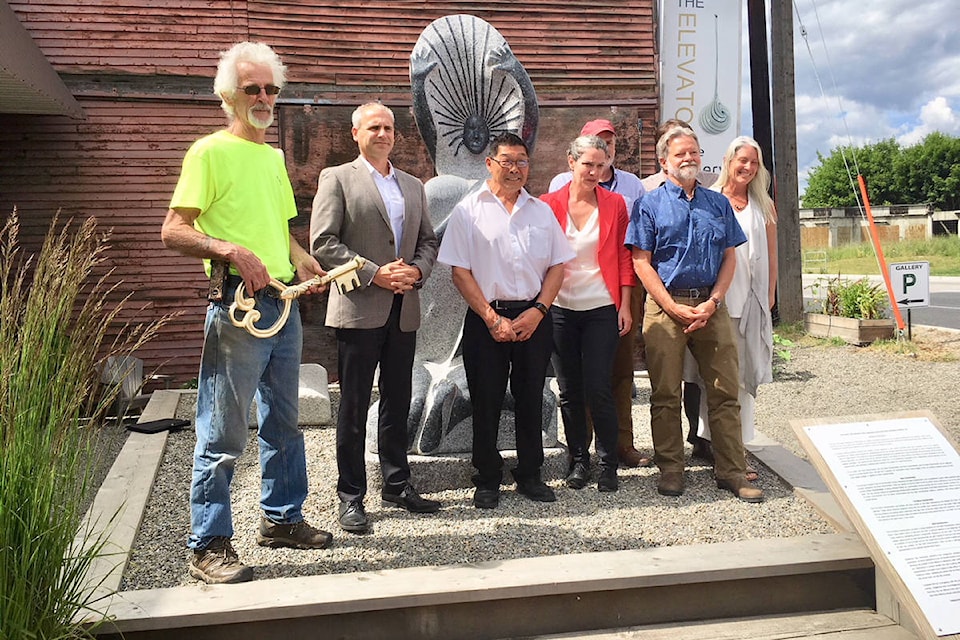To describe the pair of grain elevators in downtown Creston as iconic heritage sites is hardly an exaggeration, considering that they are two of just four wooden grain elevators left in the province.
The elevators have new owners, the Columbia Basin Trust announced on Tuesday.
“These elevators are priceless and so iconic for the town of Creston because of its agricultural heritage,” Johnny Strilaeff, President and CEO, Columbia Basin Trust, said. “The previous owner, Ray Gauthier, put in his own labour to clean and maintain them, and now additional work must be done. We are acquiring the elevators to ensure they can be properly preserved and maintained for future generations to enjoy.”
Strilaeff said that CBT is committed to helping preserve the region’s history and share it with future generations. In some cases CBT provides grants to help community groups or local governments to conserve important buildings. It was determined that an outright purchase of the elevators in Creston was the best option.
The six-storey structures were built in 1935 and 1936, and were used to collect, store and ship locally grown wheat, barley, oats and rye. Since their closure in 1971 and 1982, they have seen little use or major upkeep since.
The annex to the red elevator now houses Kunze Gallery, which has drawn an increased focus to the buildings with its outdoor display of Stewart Steinhauer stone carvings and other art.
“This isn’t a remote field in some remote, isolated area—this is downtown Creston,” said Elana Zyblat, a heritage consultant who evaluated the grain elevators’ historical value with John Atkin last December. “The fact that we have two of them side by side, in such an accessible location, makes them more unique and more valuable than most grain elevators in the entire country.”
Before winter sets in, the first step will be to keep out weather and birds by replacing the roofs and windows, Strilaeff said. Additional repairs and restoration will take place once the future use of these elevators has been decided.
“There are lots of potential uses, and when the time comes we’ll engage with the community to consider the options,” he added. “The key is to give them a modern purpose—they won’t just be part of the landscape, but actually useful.”
Mayor Ron Toyota expressed his enthusiasm for the elevators’ new lease on life.
“These elevators have become a downtown Creston landmark and identity that enhances our community, and their history to the Creston Valley is considerable,” he said. “I was born and raised in Creston and these icons are significant to my memories. I believe their preservation will benefit our community immensely.”
Preserving heritage is one of the Trust’s strategic priorities. It delivers on it in ways like its Built Heritage Grants and Heritage, Museum and Archive Grants. To learn more, visit ourtrust.org/heritage.
Columbia Basin Trust supports the ideas and efforts of the people in the Columbia Basin. To learn more about the Trust’s programs and initiatives, and how it helps deliver social, economic and environmental benefits to the Basin, visit ourtrust.org or call 1-800-505-8998.
